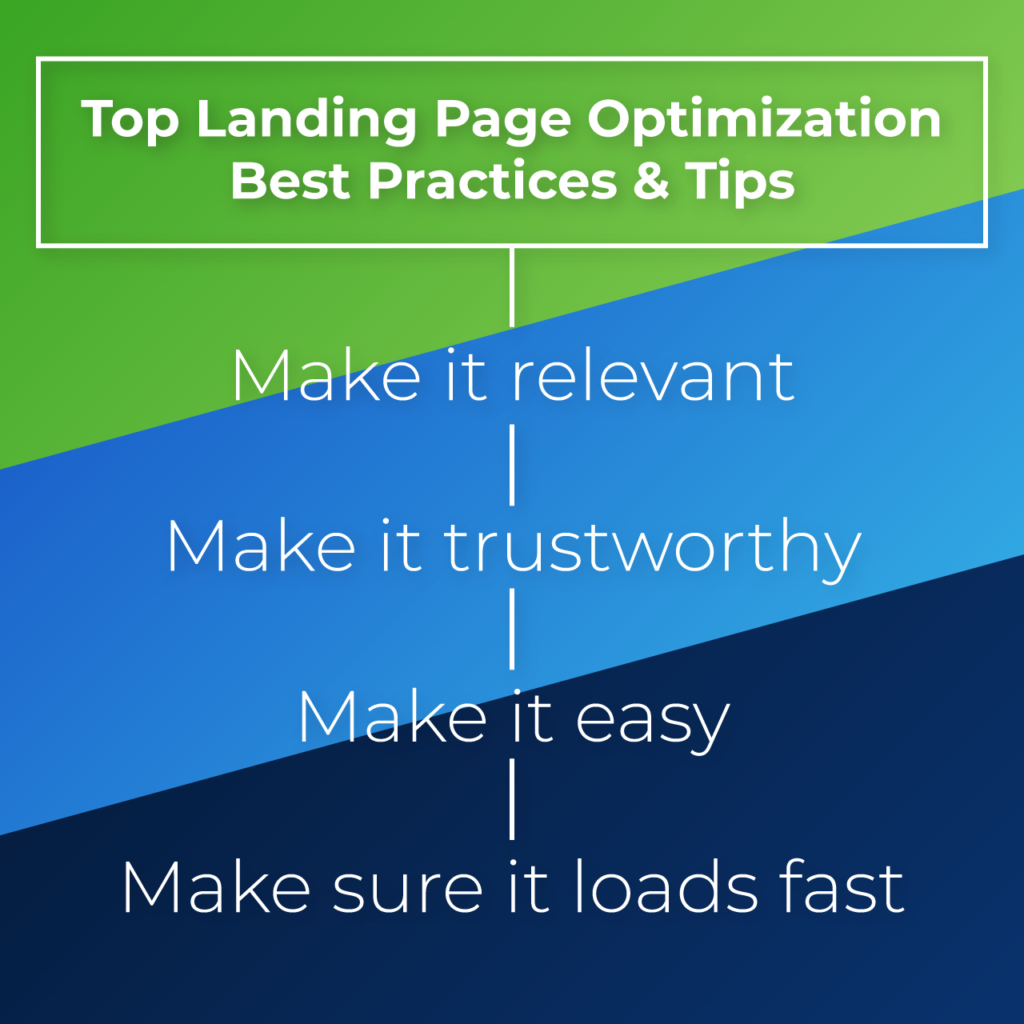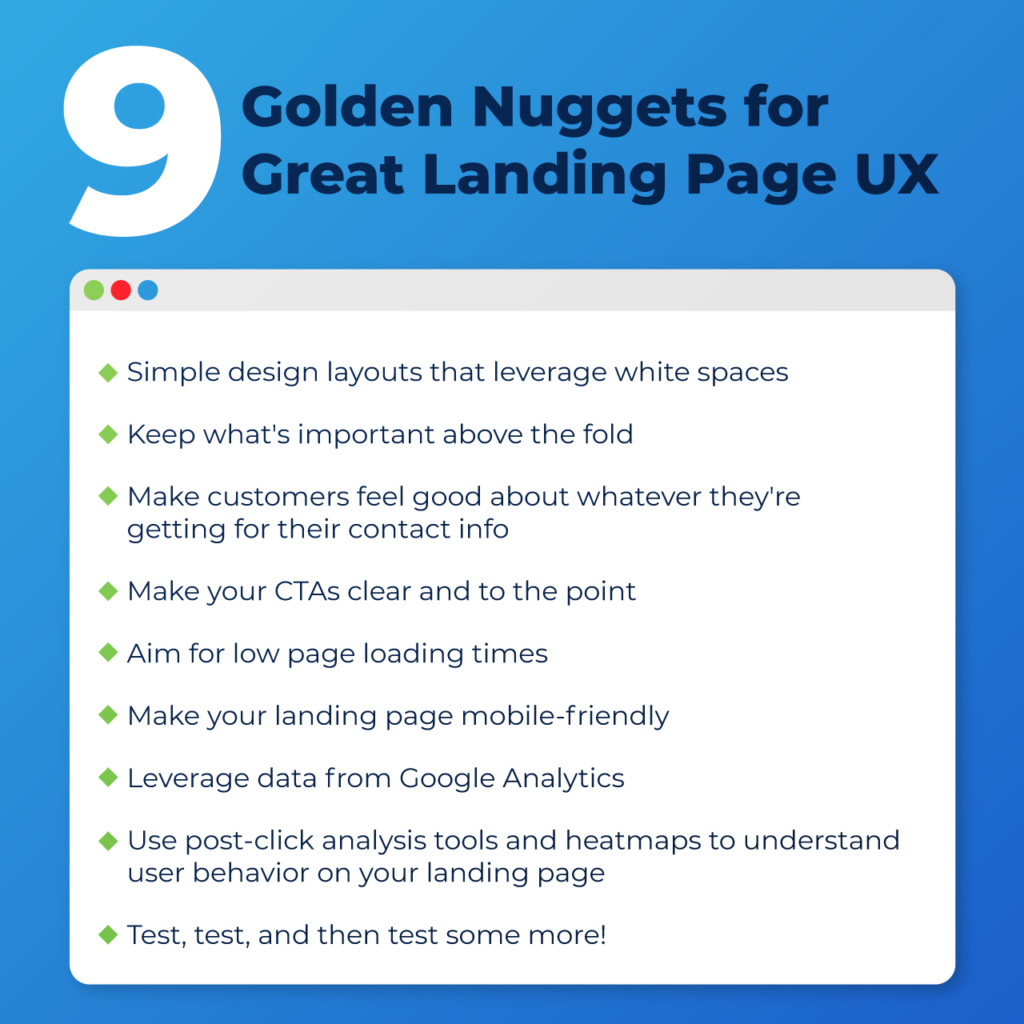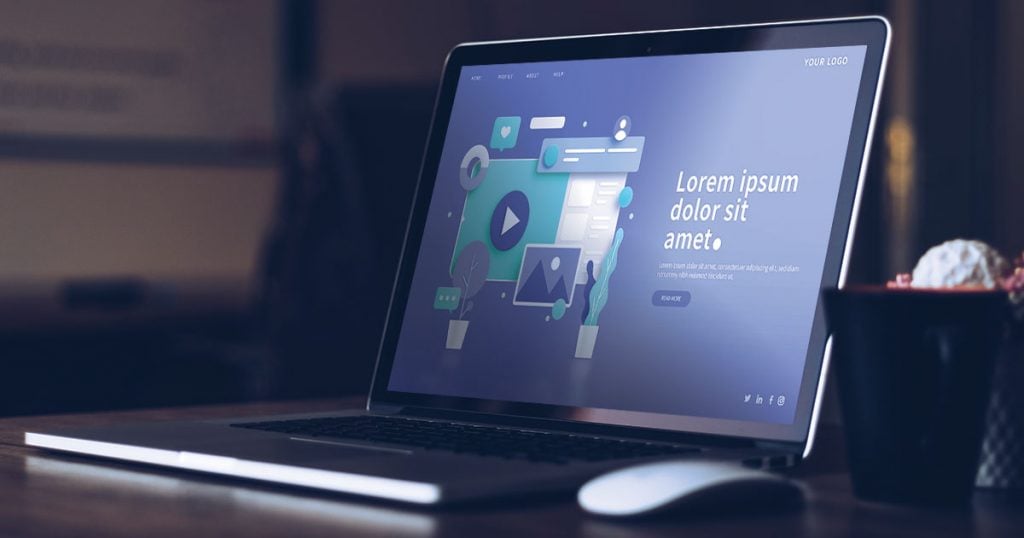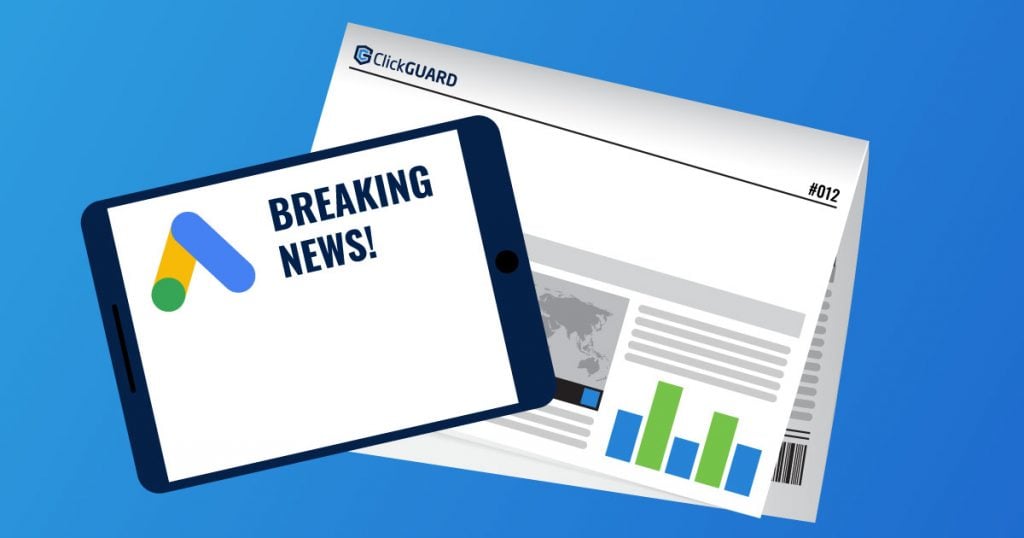You work hard to attract customers to your website. Like it or not, though, your job’s not done just yet because when visitors land on your site, they want quality information that’s engaging, fast, and mobile-friendly. Your goal is to meet them where they’re at so that they eventually convert into customers (and loyal ones at that). Landing page optimization best practices play a huge role in this.
In this article, we’ll show you how to optimize your landing pages so you can improve user experience and create a more seamless buyer’s journey.
What Is a Landing Page?
If you want to understand landing page optimization best practices, you need to know that web pages have various purposes – information, directions to your offices, customer engagement and delight, and so on. A landing page refers to a web page that’s designed solely for conversions, and it’s a key ingredient of digital marketing. It gets its name because prospects and customers “land” on it after they’ve clicked on your link in an online ad, email, search engine, or social media platform.
A call-to-action (CTA) drives prospects and customers to your landing pages. CTAs and landing pages are the optimal pairings for increasing conversions and decreasing your cost-per-acquisition (CPA).
How Does a Landing Page Work?
Landing page optimization best practices focus on one main purpose – driving conversions. Effective landing pages don’t distract customers with irrelevant colors, boxes, images, or text. They’re intended to get users focusing directly on the value your products or services offered.
When landing pages work well, it’s because they have enough information to keep customers engaged, and the page isn’t so busy they feel overwhelmed.
Your marketing efforts are already somewhat effective if you’ve driven them to your landing page from another source. The original content did its job of sparking their interest and they want to know more.
There’s yet another reason landing page optimization best practices are so important.. Since the potential for conversions is higher when you use a landing page, it makes sense to direct your efforts toward the action of your landing page visitors. Lead capture forms’ purpose is that of capturing customer information so you can push them further down the funnel.
How can you be sure your landing pages are effective? By monitoring your engagement rates and conversion rates, which is another thing that’s considered landing page optimization best practices.
Landing Page Optimization Best Practices & Tips
Google Ads campaigns can be very effective in driving leads to your landing pages, and by improving the user experience, you can keep the warm fuzzies flowing.
Design, usability, and speed are all important components of a well-designed landing page. We’re outlining all the right steps to give your users a quality user experience after they’ve clicked on one of your ads.

Take note of the following things to help you out with landing page optimization best practices:
Make It Relevant
In your quest for landing page optimization best practices, the questions you have to ask here are, “Will customers find what they’re looking for on your landing page?” and “Is the content relevant to the reason they went to your landing page?”
If not, here’s how to fix it:
- Pair up the keywords in your Google Ads to your landing page
- Correlate your CTA on your ads to your landing page
- Every element on your landing page should support your goal of conversions
- Highlight your unique features
- Match the tone of your landing page to your audience
Make It Trustworthy
A well-designed landing page offers product or service descriptions and explanations which affirm that your brand and website are credible and trustworthy.
Here are some tips to achieve landing page optimization best practices and gain your customers’ trust:
- Be genuine and upfront about what your products and services offer
- Display prices and fees
- Design contact information into your landing page that’s easy to find
- Assess your content and copy for proper grammar and good spelling
- Explain clearly why you need their customer information
- Add reviews and testimonials
- Avoid annoying pop-ups
- Provide links to terms and conditions and privacy statements
- Add certifications or brand associations to demonstrate credibility
Make It Easy
Users that hit on your landing page are likely to buy, so make the task easy for them. Landing page optimization best practices mean they shouldn’t have to click on multiple links to make a purchase.
These tips should help:
- Get their attention with lists or bullets
- Don’t beat around the bush
- Design a large CTA button
- Create shareable content
Ensure It’s Reliable
Nothing makes a prospect bolt away from your landing pages like slow loading times. landing page optimization best practices recommend speeding up load times.
Keep customers moving along the sales funnel with these tips:
- Improve speeds of landing pages on desktop and mobile
- Aim for a consistent user experience
- Minimize Flash and JavaScript
- Match landing pages to branding
- Use a welcoming, inviting tone
Optimizing Your Landing Page Is All About the User Experience
You can’t go wrong when you keep the user experience in mind when optimizing your landing pages.

We’ve got some tips for landing page optimization best practices that are easy to implement:
1. Design simple layouts that leverage white space. Focus on one concept. Keep things simple, minimal, and straightforward so customers will focus on the CTA.
2. Put the important stuff above the fold. That refers to a clear headline with a value proposition under it. It also refers to a clear CTA and an optimized contact form.
3. Remember the rule about relevancy. Be sure customers are clear about what they’re getting for giving up their contact information, and make sure it leaves them with that “feel good” mentality.
4. Design clear, unambiguous CTAs. Limit CTAs to one that tells them exactly what the next step is, and then take them directly there.
5. Decrease page loading times. If your pages load too slowly, you will end up with high bounce rates and low conversions. The faster your landing pages load, the quicker you can get to a conversion.
6. Make landing pages mobile-friendly. In 2019, 40% of shoppers used a mobile app to make a purchase, and the numbers are only growing.
7. Leverage data from Google Analytics. Gather data from detailed reports to gain insight into the user experience and learn the hot spots on your landing pages.
8. Leverage data from othet tools as well. For example, ClickGUARD’s post-click data can provide you with numerous meaningful insights into how your landing page visitors are reacting to it. Likewise, heatmapping tools can also be an excellent source of insights on how users interact with your landing pages.
9. Test, test, and test your landing pages! Google Optimize allows you to create multiple versions of your site without having to use coding so you can test them for performance. This is a great tool for improving your shopping cart pages to see which designs drive the most conversions.
Whether we like it or not, there’s no magic recipe to creating good Google Ads that drive quality traffic, convert, and bring back the ROAS you’re aiming for. It’s all trial, adjustment, and error — so make sure you keep on tinkering with your ads until you get the results you need. Oh, and don’t forget to make sure you block out bots, fraudulent clicks, and invalid traffic (which only drain your budget and bring nothing in return.) Products like ClickGUARD can help with this, check us out, and let’s get in touch if you have any questions!



